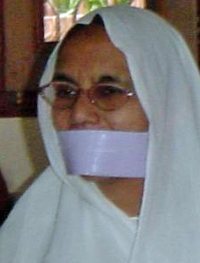Acharya Bhikshu was born in 1726 A.D. (V.S.1783) at Kantaliya (Marwar District) in the state of Jodhpur (Rajasthan). He was initiated by Acharya Raghunathji in 1751 A.D. (V.S.1808) and devoted himself to the study of Jain Agamas for a period of eight years.
He closely observed the mentality of those monks and nuns who, at that time, had grown accustomed to comforts and became lax in their strict code of conduct. Though they had declared themselves to be unattached, they still retained their rights over the Sthanakas (the place where the monks used to stay). With a view to increase the number of disciples, they started offering many types of enticement to the members of the lay community. Observing the increasingly lax conduct of the ascetice, the shravakas had doubts about the genuinity of ascetism. Those who were well-wishers of the order urged the ascetics to adhere strictly to code of conduct, but the erring mendicants did not improve. Consequently, the Shravakas of Rajnagar (adjoin district of Udaipur) declared that as long as the lax ascetics would not become strict, they would not support, nor pay any respect to them.
When Acharya Raghunathji came to know of the turn of events, he became very anxious. At that time, he was in Marwar where he intended to spend his chaturmas. Therefore, Acharya Raghunathji sent Muni Bhikanji who was one of his favourite and most learned monks, to Rajnagar to resolve the dissension created there and thus bring the situation under control by removing the doubts of the dissenting Shravakas.
When Muni Bhikanji arrived at Rajnagar, all the Shravakas were pleased to see him, because he was popular there as an intelligent monk with excellence in detachment. Bhikshu Swami, by the dint of his reasoning power, convinced the dissenting Shravakas, and as a result, they restored their faith in the guru and agreed to pay obeisance to the Sadhus once again. However, Muni Bhikanji’s conscience bit him. In his mind, he was aware of the laxity in the conduct. He shared the Shravakas concerns and went deep into his own introspection as a result of the situation. On one hand, he had affection and respect for his guru Acharya Raghunathji, and he wanted to stay with him; but on the other hand, he wanted the religious order to adhere to its conduct.
 Sadhvi Vishrut Vibha
Sadhvi Vishrut Vibha

